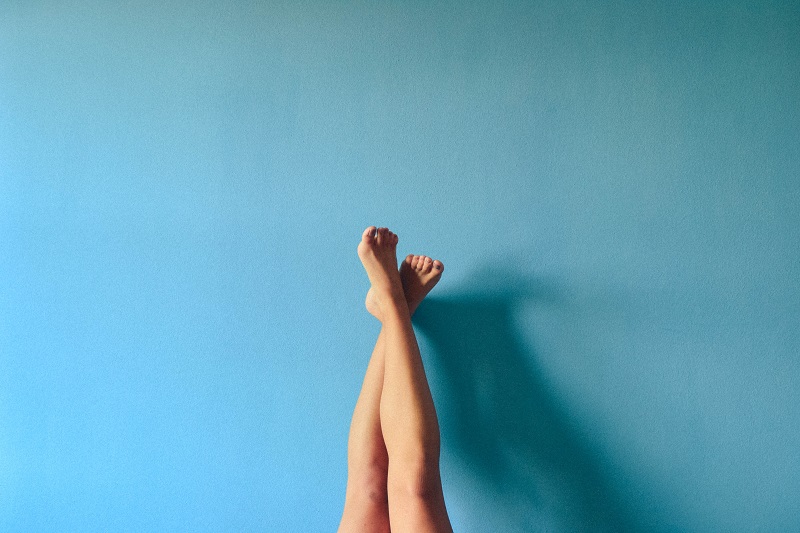 While we continue to transition into cooler weather, you may notice some changes in your skin. Dryness, irritation, redness, or maybe even some new signs of aging such as fine lines and wrinkles. As dermatologists, we are skincare experts and here for your every need. This month is National Healthy Skin Month, and a great time to think about your skin’s health and how to have glowing, hydrated skin all year round so you can keep looking and feeling at your best.
While we continue to transition into cooler weather, you may notice some changes in your skin. Dryness, irritation, redness, or maybe even some new signs of aging such as fine lines and wrinkles. As dermatologists, we are skincare experts and here for your every need. This month is National Healthy Skin Month, and a great time to think about your skin’s health and how to have glowing, hydrated skin all year round so you can keep looking and feeling at your best.
Invest in Your Skin
We all have different skin types, needs, and concerns so invest in your skin by learning about it! If you are unsure what your skin needs, schedule an appointment with us so we can evaluate your skin’s health and guide you towards products that will work wonders for your skin. Often, it can be easy to grab the cheapest product off the shelf, but in skincare, you often get what you pay for. Allow us to create a customized skincare routine with selected products that can help you to reach your goals of treatment and heal your skin so that you can feel and look radiant.
Wash & Moisturize Daily
Self-care is important not just for your physical health, but also emotional and mental. Aside from washing your face twice a day with warm water and a mild cleanser, showering or bathing daily using a soap or body wash formulated for your skin type can keep your skin clean and healthy. Keep in mind that your skin’s needs change with the seasons, as it gets colder and dryer you may need to consider products with more moisturizing ingredients. We also recommend washing after exercise, sweating excessively, and swimming.
Practice good shaving techniques, wet your skin and hair to soften the area, and use moisturizing shaving cream, lathering it well on your body before shaving in the direction of hair growth. Rinse after every stroke and change blades after several uses. These tips can minimize your risk of irritation, razor bumps, and ingrown hairs.
After you shower or bathe, apply a moisturizing ointment, cream, or lotion immediately after washing to help trap in remaining moisture to your skin. Ointments and creams can be more effective at times compared to lotion and are good to use before bed.
Protect Your Skin
The sun’s intense UV rays can lead to early signs of aging such as wrinkles and fine lines as well unwanted changes in pigmentation like dark spots. By using sunscreen daily, you can protect against the sun’s harmful rays and lower your risk of developing skin cancer. Apply sunscreen all year round. The American Academy of Dermatology highly recommends an SPF of 30 or higher with UVA protection. Be sure to reapply every four hours if you know you will be outside for a while. Sunglasses and protective clothing such as long sleeves and pants can also go a long way in protecting your skin from the harsh rays of the sun.
Conducting monthly self-examinations of your skin is another great way to protect and maintain your skin’s health. Use a full-length mirror to check your front, back, and sides with your arms raised. Be sure to scan over your forearms, underarms, palms, and elbows. Don’t forget to check your legs, toes, and soles of your feet. A hand mirror can help you examine other areas such as your neck, scalp, back, and buttocks.
Look for any asymmetrical shapes, uneven skin, spots with bumpy borders, different colored areas, or spots that might be changing in size, shape, and color. We know it may seem like a lot, but it is important to check regularly and look for any changes in your skin.
Treat Yourself
You may not think we care about cosmetic treatments, but cosmetic dermatology is still dermatology! Take time this month to treat your skin with one of our amazing treatment options. Chemical peels, photofacials, microneedling, laser therapy, soft tissue fillers, and skin tightening are just a few of the services we provide to give you better-looking and feeling skin.
Lower Your Stress
Excess stress can increase your risk of breakouts, unwanted blemishes, and acne. A healthy lifestyle will lead to healthy skin. A well-balanced diet accompanied by regular exercise can help to lower your stress levels while fueling your skin’s needs. Getting consistent sleep, staying hydrated, taking vitamins, and practicing stress relief techniques such as mediation, journaling, and yoga can also lower your stress levels and lead to fewer stress-related breakouts.
November is also a great time to schedule a screening and have your skin evaluated by a medical professional. During your appointment, we can look for any irregularities and answer any questions or concerns you may have about your skin or skincare products. By visiting us annually, we can monitor your skin for changes or signs of cancer. For more information on how to keep your skin clear and healthy, contact The Pearl Dermatology today.





 Though not considered a medical emergency, warts are a common ailment. Some warts may even cause pain and negatively impact your quality of life. At our office, we are proud to provide several treatment options to help you get you on the path towards clear skin once again.
Though not considered a medical emergency, warts are a common ailment. Some warts may even cause pain and negatively impact your quality of life. At our office, we are proud to provide several treatment options to help you get you on the path towards clear skin once again.
 We know that this upcoming school year will be different from the years before. Some are returning to classrooms with masks while others continue with virtual studies. Whatever the school year looks like for you, we are here for all your skincare needs and want to make sure you and your skin are happy and healthy.
We know that this upcoming school year will be different from the years before. Some are returning to classrooms with masks while others continue with virtual studies. Whatever the school year looks like for you, we are here for all your skincare needs and want to make sure you and your skin are happy and healthy.


 The cold,dry, outdoor air combined with indoor heating can cause your lips to become severely dried out and chapped. Add in harsh winds to a cold day and your lips are at a higher risk for ending up chapped, dry, cracked, and red. Though chapped lips are common during the dry winter months, that doesn’t mean you have to wait for spring to have supple, smooth lips. The delicate skin of your lips needs extra care during winter to stay hydrated, so use these tips to keep your lips hydrated and supple this winter.
The cold,dry, outdoor air combined with indoor heating can cause your lips to become severely dried out and chapped. Add in harsh winds to a cold day and your lips are at a higher risk for ending up chapped, dry, cracked, and red. Though chapped lips are common during the dry winter months, that doesn’t mean you have to wait for spring to have supple, smooth lips. The delicate skin of your lips needs extra care during winter to stay hydrated, so use these tips to keep your lips hydrated and supple this winter.


